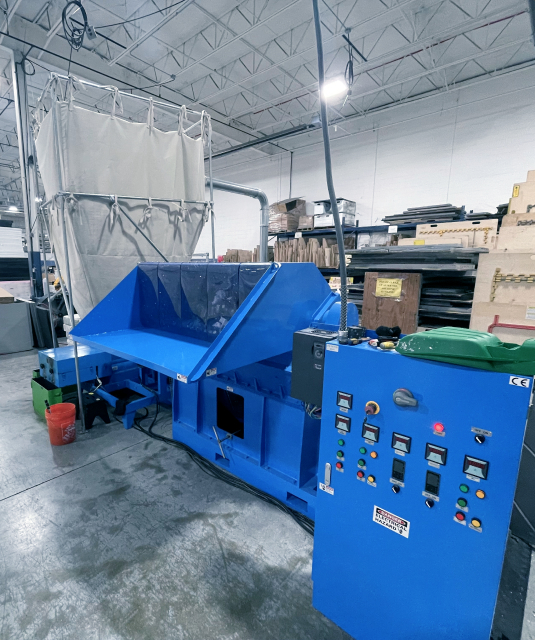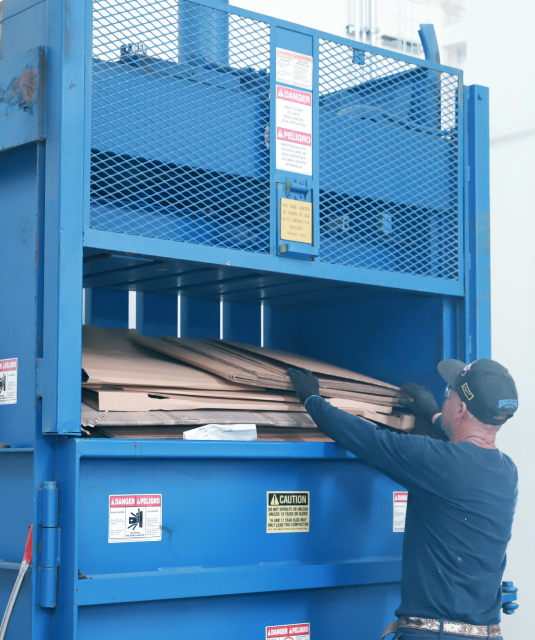Flexible packaging sustainability is crucial in industrial packaging because it directly impacts the environment and future generations. The increasing demand for packaged goods has led to unsustainable use of resources, generating large amounts of waste and pollution.




Recyclable Cardboard
Our EcoVadis score
In-House Foam Recycling


Industrial packaging materials such as plastic, metal, and paper significantly impact the environment, including greenhouse gas emissions, land and water pollution, and depletion of natural resources.
By prioritizing flexible packaging sustainability, ABP helps protect the environment, and these efforts will reduce costs in the long run.


We also adopt sustainable packaging manufacturing practices such as reducing energy consumption, minimizing waste generation, and using renewable energy sources.
Through these design initiatives we:
By using less material and minimizing waste, we can reduce the environmental impact of the packaging industry and promote a more sustainable future.
Our recycling program includes the following:
In addition to the above steps, our recycling program includes education and awareness initiatives to promote recycling among customers and employees. By promoting recycling and reusing materials, ABP reduces waste, conserves resources, and promotes a more sustainable future.



By taking these steps, a packaging company can significantly reduce its environmental impact, enhance its brand reputation, and contribute to a more sustainable future.
As a customer, you can help with sustainability by taking several steps:
By using less material and minimizing waste, we can reduce the environmental impact of the packaging industry and promote a more sustainable future. Together, we can contribute to a more sustainable future by taking these steps.
Sustainable packaging refers to using materials and design practices that minimize the environmental impact of packaging throughout its life cycle. Minimizing ecological impact includes:
One essential feature of sustainable packaging is its recycling or composting ability. Recycling and composting ensure packaging material doesn’t go to waste, reducing the need for new resources.
Sustainable packaging should minimize waste, using only the necessary material and avoiding excess packaging. It should be made from renewable or recycled materials, reducing the environmental impact of the production process, and it should use non-toxic materials that do not harm the environment or human health.
Sustainable packaging is essential for several reasons. It helps to reduce the environmental impact of packaging materials. Traditional packaging materials such as plastics can take hundreds of years to decompose and can pollute the environment during that time. By using sustainable packaging, we can reduce the amount of waste going into landfills and minimize the pollution released into the atmosphere.
Sustainable packaging promotes a more circular economy, where resources are used efficiently, and waste is minimized. By designing packaging that can be easily recycled or composted, we can keep materials in use for longer and reduce the need for new resources to be extracted from the environment.
Sustainable packaging can also positively impact your brand reputation and consumer loyalty. Consumers are increasingly concerned about the environmental impact of the products they purchase, and sustainable packaging can help demonstrate a company’s commitment to sustainability and responsible business practices.
There are several ways that packaging can be made more sustainable. One approach is to design returnable or reusable packaging, which can help reduce the amount of waste generated by packaging by keeping materials in use for longer.
Another way to make packaging more sustainable is to maximize pack density. Maximizing pack density involves designing packaging that uses as little material as possible while protecting the product during transportation and storage. By maximizing pack density, companies can reduce the amount of packaging material used and minimize the environmental impact of their packaging.
Using renewable or recycled materials in packaging can also make it more sustainable. Using renewable or recycled materials includes using materials like paper or bioplastics that can be recycled or composted, or using recycled materials like recycled cardboard for packaging.
By incorporating approaches like returnable and reusable packaging, maximizing pack density, and using renewable or recycled materials, we can reduce the environmental impact of packaging and promote a more sustainable future.
Sustainable packaging helps the environment in several ways. It can help reduce the amount of waste generated by packaging. By designing packaging that uses only the necessary amount of material, we can minimize the amount of waste generated during production and disposal. Additionally, using renewable or recycled materials can reduce the amount of virgin resources extracted from the environment.
Sustainable packaging can also help reduce the environmental impact of the production process. By using materials that require less energy or water to produce, we can reduce the carbon footprint of the packaging industry. Reducing our carbon footprint can help mitigate climate change and reduce the industry’s environmental impact on local ecosystems.
Sustainable packaging can reduce the amount of pollution generated by packaging materials. By using non-toxic materials that do not harm the environment or human health, we can minimize the impact of packaging on ecosystems and reduce the risk of harm to human health.
There are several ways to make packaging more sustainable:
Overall, making packaging more sustainable requires a holistic approach that considers the environmental impact of the entire packaging life cycle. By reducing packaging, using sustainable materials, maximizing pack density, using reusable and returnable packaging, and considering the entire life cycle of the packaging, we can reduce waste and promote a more sustainable future.